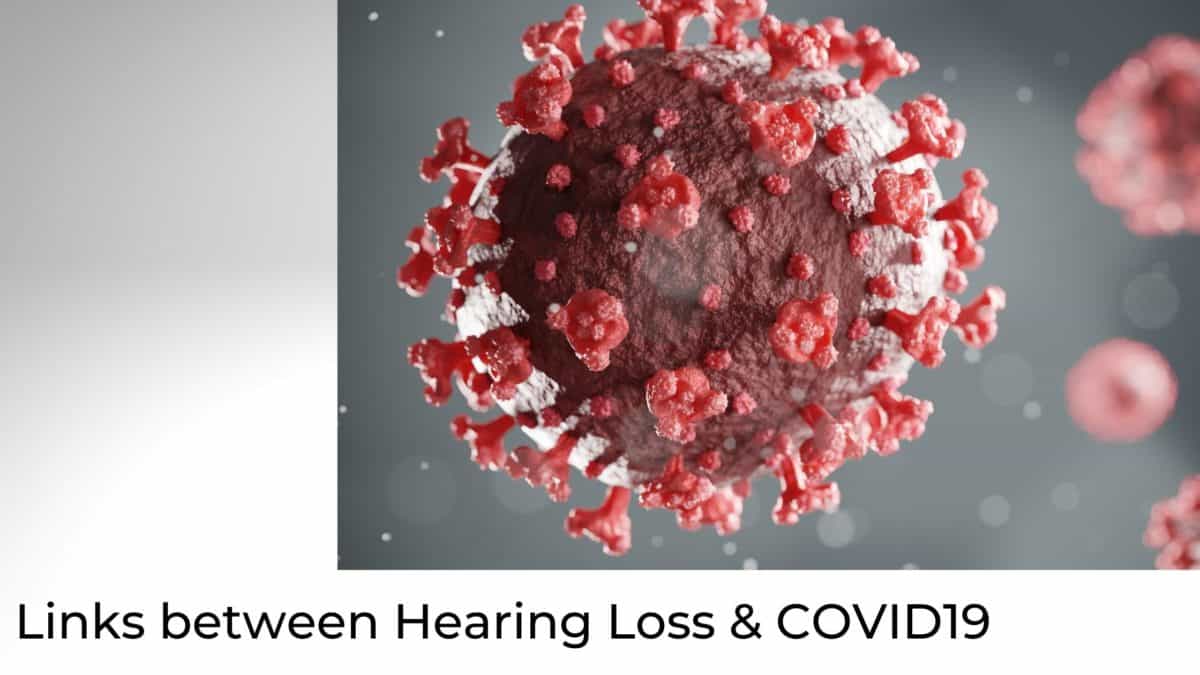- How to Know When It’s Time to Replace Your Hearing Aids - July 8, 2024
- Hearing Aid Repair and Cleaning Best Practices - June 24, 2024
- The Lifelong Benefits of Early Detection and Addressing Your Hearing Loss - June 10, 2024
In the last two years or so, we have learned an enormous amount about COVID-19. It’s almost hard to believe that the disease was not on the radar not long ago, and now it has come to dominate some parts of life. As we learn more about the condition, it looks like some symptoms are common, such as fever and respiratory issues. Unusual symptoms like the loss of taste and smell have become a signal that what might otherwise be a common cold might actually be a case of COVID-19. One new symptom has joined the list of long-term effects of the condition: tinnitus. Those who have COVID-19 demonstrate higher rates of tinnitus than the general population, according to a recent study. Let’s take a moment to explore this relationship, including some prevailing theories about how these two conditions might be connected.
Tinnitus and Hearing Loss
Though these two conditions are closely related, tinnitus and hearing loss function differently in the body. Tinnitus is a persistent sound that emerges from within the body, rather than from an outside source. The most common form of tinnitus is located in the tiny hairlike organelles of the inner ear called stereocilia. These cell clusters are incredibly sensitive to differences in pressure, and that sensitivity makes them susceptible to damage, as well.
Hearing loss can occur when there is damage to these tiny hair cells, as well. In the case of tinnitus, it’s as if the damage permanently turns “on” the receptor, whereas hearing loss results from turning “off” that receptor. In both cases, the condition can be permanent, and treatment is necessary to deal with the aftermath of stereocilia damage. Noise exposure is a primary source of damage to the stereocilia, and that damage can cause either tinnitus, hearing loss, or both conditions at the same time. In addition to noise exposure, stress is a common cause of tinnitus. Experts do not understand as much about this connection as the connection with noise exposure.
COVID-19, Tinnitus, and Hearing Loss
What might explain the connection between these conditions? It’s not as if COVID-19 exposes a person to more noise than usual. The conditions of the global pandemic might have produced the opposite effect, relatively less noise for many people who were under quarantine or lock-down conditions. One of the possible connections between COVID-19 and these other conditions has to do with oxygen supply to the stereocilia. As a respiratory disorder, COVID-19 can produce a shortage of oxygen supply to the organs of the body. The stereocilia are particularly sensitive to oxygen supply, and this reality connects hearing ability to other bodily processes, including cardiovascular functioning. It is possible that COVID-19 has such an effect on the supply of oxygenated blood that it can lead to a chain reaction resulting in tinnitus or hearing loss.
Another possible explanation has to do with the stress of the condition and the pandemic, more generally. A final connection points to the relative quiet experienced during quarantine and lock-down conditions. With less activity outside the home, many people had an opportunity to notice tinnitus conditions that they hadn’t formerly noticed. Though the underlying mechanism connecting tinnitus and COVID-19 is unclear, one recent report documented the connection between them. A study of more than 3,000 people from 48 countries found that a full 40 percent of those with COVID-19 symptoms also reported tinnitus, a number that is much higher than the general population. Some people even reported that tinnitus symptoms began when they developed a diagnosis of COVID-19.
Seeking Treatment for Tinnitus & Hearing Loss
If you have tinnitus or hearing loss, the good news is that treatment options are available. Beginning with a hearing test, our hearing health professionals can diagnose your condition and the ways that treatment such as hearing aids can support you. The test is quick, simple, and totally painless, but we will obtain a full diagnosis of your condition from this brief test. Don’t put off getting the full picture of your needs and the possibilities for treatment that are available to you. Once you make an appointment for your consultation and exam, you will be on the road toward treatment.

